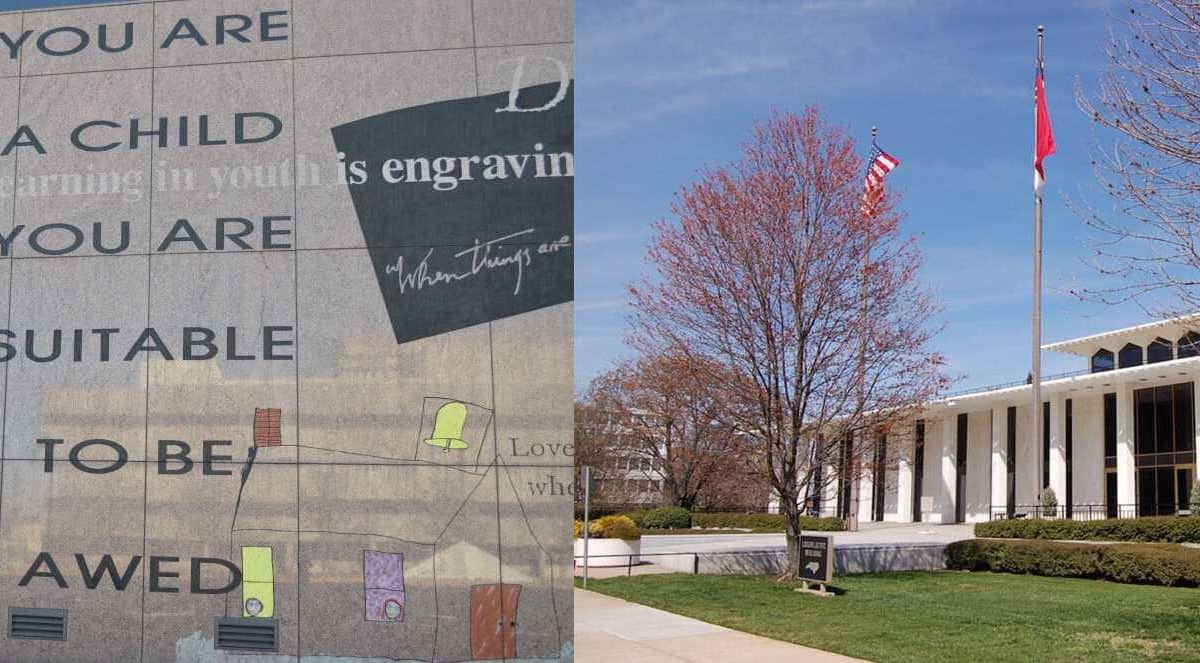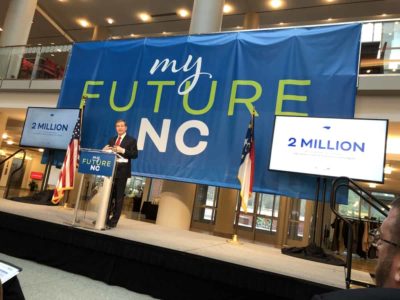
In the fall of 2005, a gubernatorial veto of a teacher-licensing bill stirred up a legislative and educational tempest. Then as now, local school superintendents appealed to state authorities to loosen requirements on hiring out-of-state teachers to fill hundreds of classrooms in North Carolina.
Fourteen years ago, the General Assembly responded with legislation that passed with overwhelming majorities in both the House and Senate. Democratic Gov. Mike Easley vetoed the bill. And his veto was sustained by a maneuver in the House, where the bill was tucked into a committee and did not emerge for an override vote before the legislature adjourned. (For more on the veto, see these contemporary newspaper articles from Star News and the News & Observer.)
Easley objected to state government permitting the hiring of teachers who passed licensing exams in other states with lower standards than North Carolina. To do so, he argued, in effect would slide North Carolina down toward the lowest state standards. How could North Carolina raise its quality if it accepted teachers from elsewhere without regard to its own standards?
And now, as history repeats itself as it is wont to do, the State Board of Education approaches a key decision on upholding quality in the North Carolina teaching corps. The Professional Educator Preparation and Standards Commission (PEPSC) has recommended that the state board allow the hiring of out-of-state applicants with three or more years of teaching experience who have met another state’s testing requirements.
It’s easy to see the devilishly difficult conundrum facing superintendents and principals, especially in smaller, low-wealth districts. Sometimes the desperation choice is between hiring a teacher from another state or relying on a long-term substitute. Perhaps limited waivers can ease crisis situations; and yet, too much wiggle room on state standards can turn into gaping loopholes.
As the Education Policy Initiative at Carolina observes in its most recent brief on staffing classrooms, “teacher supply challenges are likely to persist’’ for years even with effective efforts to attract more young people into teaching. EPIC has studied the performance and retention of early career teachers who entered classrooms through various pathways. Somewhat more than one-third of public school teachers come from the schools of education in the UNC system. Out-of-state university graduates account for slightly more than one-fourth. Graduates of in-state private universities and lateral-entry teachers, combined, make up more than one-fourth. Teach for America contributes no more than 1 percent of teachers.
EPIC has found that, in aggregate, teachers prepared in the UNC system and in in-state private universities remain in North Carolina classrooms longer than lateral-entry and out-of-state hires. In EPIC’s analysis of student achievement and teacher evaluation ratings, UNC system-graduated teachers score higher, as a general rule, than out-of-state, lateral-entry, and in-state private university-prepared teachers. Teach for America gets a nod for effectiveness in hard-to-staff schools, though most TFA members leave when their two years of service ends.
“As the state takes action to address teacher shortages, those actions must be aimed at recruiting and retaining more and higher quality teachers,” says the EPIC brief.
There is continuing debate over the extent to which pay affects how many people enter teaching and how many stay in the profession. Working conditions and societal prestige also matter. In their marches for redress of grievances in North Carolina and elsewhere, teachers have argued not only for increased compensation, but also for more robust funding of public education.
A recent article in Stateline, published by the Pew Charitable Trusts, contains maps and charts showing state trends in teacher pay and per-student spending. Stateline reports that, calculated in constant dollars, North Carolina’s per-pupil spending went from $9,732 in 2006 to $9,329 in 2017.
The finding that per-pupil spending has still not fully returned to its pre-recession level is also part of the historical context of the pending teacher-licensing decision by the State Board of Education. Whether in writing the public education budget or in setting teacher-quality standards, long-term advancement in educating North Carolina’s young people for the mid-21st Century is not likely to come through retrenchment, incrementalism, and short-term expediency.


